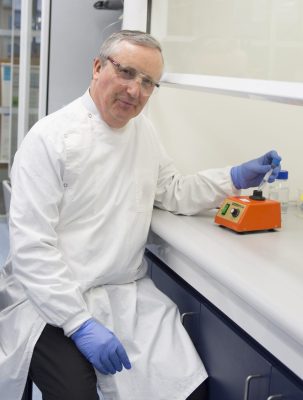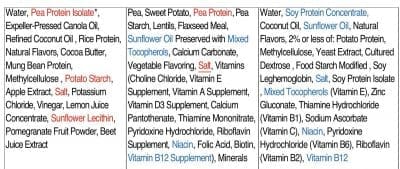FOOD labelling is out of step with healthy diet recommendations and could be improved by including nutrient release rates, according to University of Queensland Emeritus Professor Mike Gidley.
The researcher at UQ’s Queensland Alliance for Agriculture and Food Innovation said nutrition was currently communicated in two ways, by a food’s nutrient composition and by the diversity of wholefoods in the diet.

Prof Mike Gidley
“At the moment people pick and choose which of these food languages works best for them, but something is missing,” Emeritus Professor Gidley said.
“Composition defines nutritional value by the nutrients and calorific energy the food contains, measured against daily consumption targets.
“Whole food (like red meat) tends to be what health agencies emphasise because that is where the strongest evidence for human health benefits has been found.
“The problem is if you measure food in terms of how much protein, carbs or fat it contains, it’s not enough to judge nutritional value. Some unhealthy foods have similar compositions to healthy options.
“And whole foods generally have a slow and steady nutrient release, while nutrients in fabricated ingredient foods are generally more rapidly released, a difference which is not addressed if nutrition value is only based on composition.
“A better labelling system would include the rate at which an individual component – protein, starch, fat, sugar – is delivered, or predicted to be delivered to the body.
“If we can incorporate nutrient release rates, we can bridge the gap between the two types of nutrition communication.”

Monique Cashion, MLA group manager for food and nutrition
Meat & Livestock Australia’s nutritionist Monique Cashion said current labelling systems often focussed on nutrient content alone, which can overlook how foods are digested and absorbed.
“As Prof Gidley notes, whole foods typically release nutrients more slowly and steadily, contributing to better health outcomes. Red meat is a prime example as it is naturally rich in bioavailable protein, iron, zinc, and B vitamins,” she said.
“MLA supports innovation that helps consumers make more-informed dietary choices. We agree that more nuanced labelling could better reflect the physiological impact of different foods and distinguish whole foods from more processed alternatives.”
MLA was actively involved in research exploring red meat’s role in nutrient absorption and metabolic function, and saw opportunity to contribute to more accurate nutritional guidelines, she said.
Further research into ‘fast, medium, slow’
Emeritus Professor Gidley said further research was needed before his proposal could become a reality.
“We need more data on real people and how they digest their food, which is a major science challenge because it happens dynamically in the body and needs to be measured non-invasively,” he said.

Ingredients listed in a plant-based processed ‘meat’ product
“We need to know not only how quickly nutrients go into us but also how much nourishes our gut microbiota, which is increasingly recognised as playing an important part of human health.
“Secondly, we need global collaboration to define a standardised analytical method to predict nutrient release from foods using a laboratory method.
“My guess is the first stage would be moving towards a fast, medium or slow kind of classification system.
“It won’t happen immediately, but without talking about it, nothing will happen, so this proposal is a conversation starter.”
“MLA commends Prof Gidley for initiating this important conversation and support efforts to enhance transparency and evidence-based nutrition in food labelling,” Ms Cashion said.
“MLA and the broader industry would benefit from engaging early to ensure red meat is accurately represented.”
Emeritus Professor Gidley’s opinion piece was published in Nature Food.
Source: QAAFI. The Queensland Alliance for Agriculture and Food Innovation is a research institute at The University of Queensland established with and supported by the Department of Primary Industries.

HAVE YOUR SAY